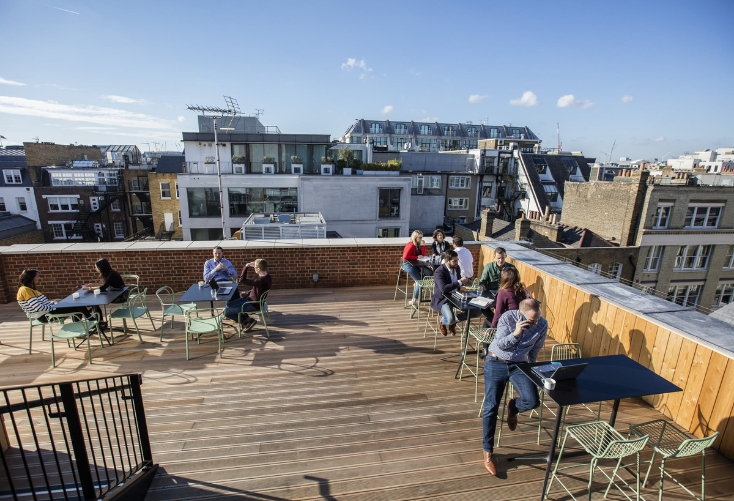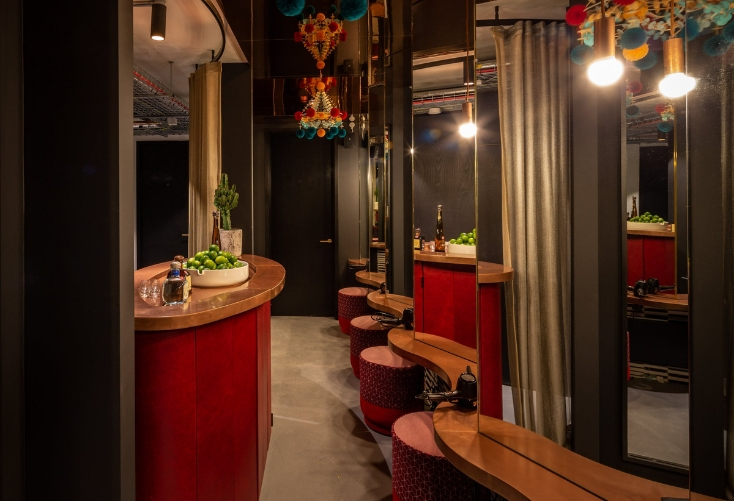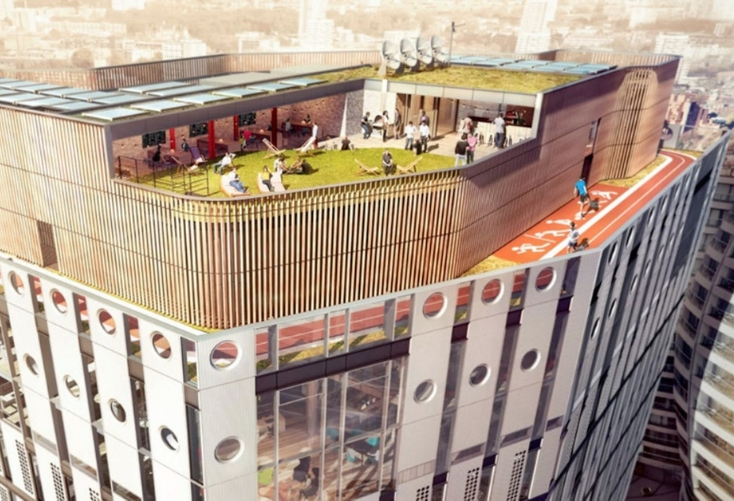- From rooftop running tracks to foliage-filled office space, today’s flexible workspaces are designed to inspire and stimulate.
- The war on talent is driving a ‘people-centric’ approach, leading to some of the most innovative spaces in London today.
- Tushar Agarwal, CEO and co-founder of online workspace search service Hubble, discusses these spaces and the positive impact they are having on occupiers’ wellbeing.
Guest post from Tushar Agarwal, CEO and co-founder of Hubble
Changes to working practices over the last decade have transformed the spaces we work in. Where once we had cubicles and corner offices, now we have open plan layouts and hot desking – making for a more collaborative working culture.
Not only that, but the war on talent has led businesses to put design and a ‘people-centric’ approach at the heart of their strategy, leading to some of the most innovative spaces in London today. In the work we do, we see first-hand the amazing facilities on offer – from racing tracks on roofs to sleep rooms. All of this has been driven by the rise of the flexible office sector.
Many studies have shown that businesses which offer the option of flexible working see staff take less leave and work more productively. The ideal is to be able to work around other commitments, including family, and a company that supports this will see talented employees stay on for longer.
This doesn’t necessarily mean cutting the work hours in the day; it’s just adopting technology that allows individuals to work remotely. Tools such as Slack, Zoom, Trello, and Google Suite all enable workers to communicate and collaborate from virtually anywhere in the world.
Technology is a huge enabler to do better, more impactful and more interesting work, as it takes over our mundane and routine tasks.
While flexible working may have started as a way of life for those with family commitments or freelancers, younger workers today are graduating in a digital-first era where any coffee shop or spot with WiFi can be their workplace. There is now less requirement for ‘face time’ and more emphasis on getting the job done.
However, it’s still important that a business’s main office functions as an exciting place to build relationships, and share and develop ideas. Larger corporates, as well as SMEs, are wising up to the fact that social areas and so-called ‘innovation hubs’ are crucial for those overseeing new and exciting projects.
So what do these new offices look like?
At Hubble, we’ve seen some of the most state-of-the-art office designs emerge – each of which has a unique and distinct offering. For example, One Heddon Street (The Crown Estate) is a modern business practice that is built with workers’ wellbeing in mind. Not only does it offer breakout spaces and quiet booths, it also has a rooftop space and gym facility for employees who want to exercise straight after — or during — work. Analysis of our data actually told us that the number of companies searching for offices with gyms increased 8% month on month in 2018.

Office provider, LEO, on the other hand, takes on the ‘space as a service’ approach, providing luxury five-star concierge support – as with a hotel.
We’re also seeing spaces go one step further in offering lifestyle perks. The Ministry keep themselves unique to competitors with a cinema, wellness rooms, and artist studio space to better support the playful nature of its occupiers.

Countering the busy city environment, office providers are also cottoning on to the cognitive and psychological benefits of working with outdoor space.
The White Collar Factory (The Office Group) features bright and airy space with an abundance of natural light and ventilation. The outdoor courtyard, roof terrace and rooftop running track is also a place for employees to enjoy stunning views of the city, reduce stress and get their blood flowing, positively contributing to mental health.

Similarly, The Atrium and Second Home features plants and foliage, and even allows pets in the office, increasing employee satisfaction with their working environment and not far removing the space from the home.

While each of these offices provides a distinct feature to their tenants, they all have a common purpose: to make workers more engaged, productive and motivated as they feed off one another’s creativity, helping to build stronger relationships as a team and reinforce commitment to the business.
We strongly believe that the key to retaining talent is building a place where people love where they work. This is three-fold: it is about having a clear purpose for your work, the culture a business fosters, and the physical environment they create within the business.
Purpose is becoming increasingly important as more people enter the workforce or look to change jobs — knowing that you are making an impact with your work is a huge driver of motivation. Similarly, company culture is paramount to retention as if people truly love and enjoy where they work, and who they work with, they will stay for longer. Having an environment that helps foster this makes the business not only more attractive to work for, but it contributes to the creativity and motivation that employees have for the company. It makes business sense.
All images sourced from hubblehq.com


 Dr. Gleb Tsipursky – The Office Whisperer
Dr. Gleb Tsipursky – The Office Whisperer Nirit Cohen – WorkFutures
Nirit Cohen – WorkFutures Angela Howard – Culture Expert
Angela Howard – Culture Expert Drew Jones – Design & Innovation
Drew Jones – Design & Innovation Jonathan Price – CRE & Flex Expert
Jonathan Price – CRE & Flex Expert













